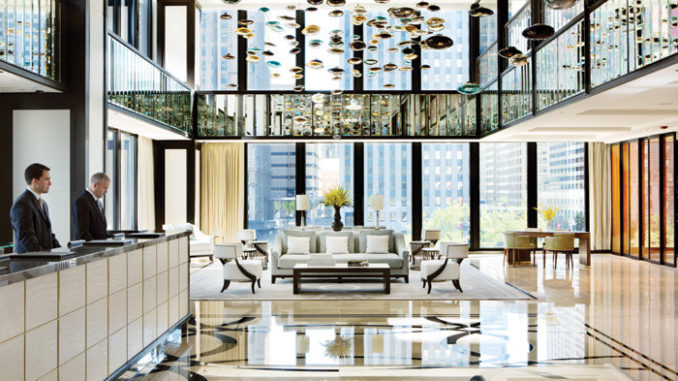
By Jeff Zabin, Managing Editor
Guests have always expected star treatment, particularly from hotels in upscale categories. Today those expectations are through the roof. This is evidenced by the fact that guests now expect a frictionless experience throughout their stay.
For hoteliers, this means, in part, providing an immediate response to guest inquiries. It means ensuring that requests for service — when guests place an order with room service, for example, or book a reservation through the concierge — get immediately fulfilled.
At the same time, guests are becoming accustomed to self-service options through mobile apps, voice-activated chatbots and other in-room devices. Hoteliers need to give guests control of services and information — far beyond just being able to check in and check out via their smartphones.
Given these ever-rising guest expectations, coupled with the need to continuously improve operational efficiencies and optimize revenue performance, hoteliers are under more pressure than ever to leverage the right set of enabling technologies to their advantage.
First and foremost among these technologies is a hotel property management system designed to automate operations while improving the quality of the guest experience. According to The 2019 Smart Decision Guide to Hotel Property Management Systems, nearly one-quarter (23 percent) of hoteliers who have not upgraded their PMS within the past 3 years plan to do so in the next 12 months.
The leading systems on the market today have evolved at lightning speed in recent years. Beyond developments in various areas of technology innovation, including ones related to mobility and personalization, the advances are reflected in the expanded scope of capabilities previously handled either semi-manually or by standalone software programs.
Just as the smartphone has evolved to incorporate countless standalone utilities, from the clock, calendar and camera to the video player, voice recorder and music player, to name just a few, the PMS has evolved to incorporate multiple standalone, function-specific software programs and platform capabilities to create an integrated, end-to-end system. There is enormous value in a system in which all component parts centrally connect, with no need to manually import data (or, even worse, re-key information), and which offers a unified view of both hotel operations and guest relationships.
While all hoteliers are bound to benefit from some of the latest developments —mobility, for example — other features and functionality of a next-generation PMS are going to be of greater value to some hoteliers than to others. After all, different hotels have differing technology requirements.
A full-service hotel will likely require a far more robust, sophisticated and comprehensive system than a small, limited-service or budget hotel, which may need only to streamline basic functions like guest bookings, housekeeping, guest charges and maintenance management. A full-service hotel will likely have complex reservation, group scheduling and inventory requirements. It may also need to manage concierge and function space operations as well as golf, spa and other facilities, with a host of guest-facing features essential to facilitating exceptional guest service.
A small, limited-service hotel may have none of these requirements. It may need nothing more than bare-bones platform for managing front office, bookings and reservations functions, from assigning guests to rooms and maintaining guest folios to coordinating profile changes, posting room charges and maintaining housekeeping status.
In all cases, the PMS needs to support all hotel functions, no matter how extensive or limited these may be. This can be done either through built-in capabilities or by allowing seamless integration with add-on modules and/or third-party software solutions. Given the ability to add any combination of modules, with minimal integration hassle, hoteliers can readily create a property- or chain-wide system.
Many systems readily integrate with guest response programs, accounting software, keycard and access control systems, self-service kiosks, internet and telephone systems, in-room refreshment (minibar) and entertainment applications — and even, in some cases, dry cleaning and transportation shuttles. Increasingly, hoteliers are testing the waters with AI-enabled smart devices, including voice-activated chatbots. Some major brands are dipping their toes into Internet of Things (IoT) “connected room” technologies that include sensor-activated thermostats, digital room keys, and in-room streaming/casting services. Hoteliers are acutely aware of the need for technology connectivity, data integration and interoperability, even if they haven’t yet transitioned to a next-generation PMS.
Are you an industry thought leader with a point of view on hotel technology that you would like to share with our readers? If so, we invite you to review our editorial guidelines and submit your article for publishing consideration.


